Cinnabar, Zhu Sha 朱砂Zhu Sha (TCM)Hingula (Ayurveda) Mtshal མཚལ (Tibetan) Hingula, Zanjafar (Unani) |

|
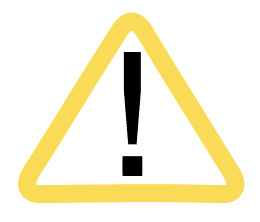
|
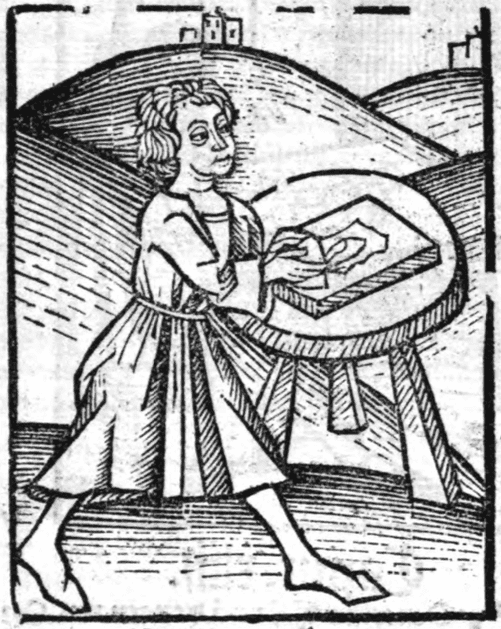 Ortus Sanitatis, Beck, 1517
Ortus Sanitatis, Beck, 1517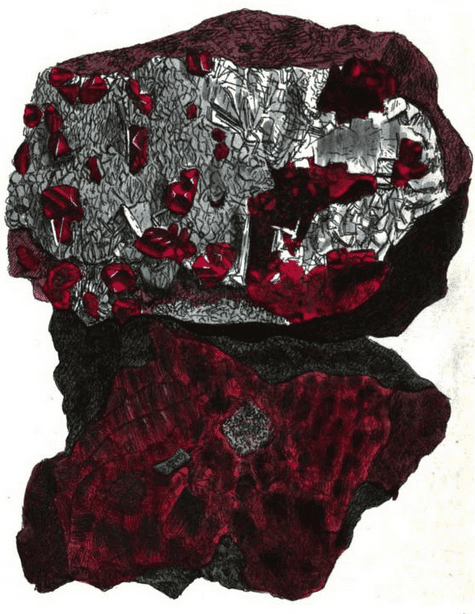 Native Cinnabar in crystal form
Native Cinnabar in crystal formExotic Mineralogy, Sowerby, 1811
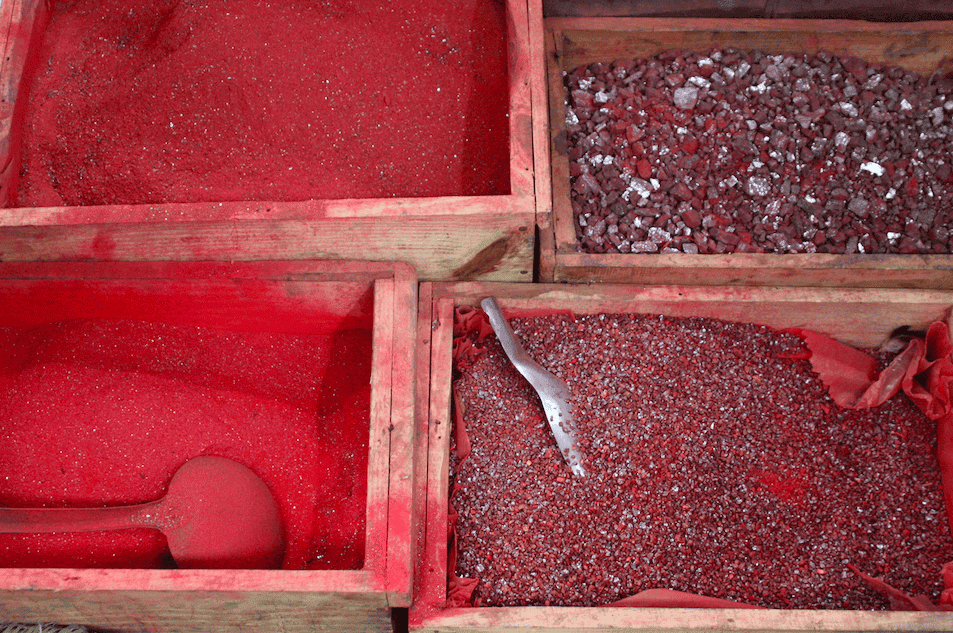 Different grades of Natural and Artificial Cinnabar / Vermillion. (Adam, Chengdu Medicine Market, 2015)
Different grades of Natural and Artificial Cinnabar / Vermillion. (Adam, Chengdu Medicine Market, 2015)
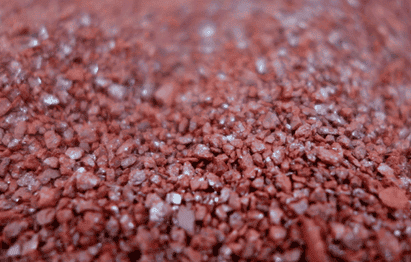 Grains of Natural Cinnabar
Grains of Natural Cinnabar |
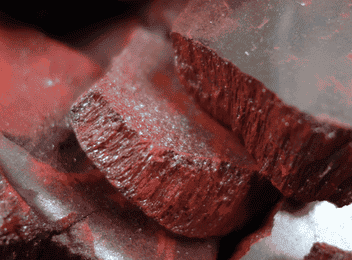 Vermillion; man-made red sulphide of Mercury
Vermillion; man-made red sulphide of Mercury |
Mineralogical name:
Cinnabar; Native Red Mercury Sulphide;
Vermillion is the name given to red Mercury Sulphide prepared artificially by subliming Mercury and Sulphur.
Temperature & Taste:
Cool, dry. Sweet. Slightly Toxic
Properties:
Crystal system: trigonal
Color: Cochineal-red, towards brownish red and lead-gray
Streak: scarlet
Cleavage: prismatic, perfect
Fracture: uneven, subconchoidal
Luster: adamantine to dull
Tenacity: slightly sectile
Transparency: Transparent in thin pieces
Hardness: 2-2.5
Specific Gravity: 8.17
Classification:
2B ATTENUATERS 2B ATTENUATERS 2F. PURIFYING
3A. SUDORIFICS & DIAPHORETICS 3C. ALEXIPHARMICS
TCM:
B. Clear Heat
G. Sedate the Heart, Mind and Spirit
Uses:
1. Calms the Heart, Mind and Spirit (West, Unani, Ayurveda, Tibetan, TCM):
-Confusion, Restlessness, Anxiety, excessive Dreaming, Insomnia, Palpitation, Fright related disorders
-Epilepsy and Convulsions including Childhood Convulsions
-calms Restless, Nervous, or Hyper-emotional people
-Mania and Manic Depression.
-Heat, Wind and Heat, Heat and Phlegm, or deficiency syndromes, depending on the medicines it is used with.
-helps ‘attain mental tranquility, calming the Soul’. (Sheng Nongs Herbal)
2. Settles Wind, Stops Spasms (West, Unani, Ayurveda, Tibetan, TCM):
-Convulsion, Epilepsy, infantile Convulsions from high fever.
-Paralysis, Apoplexy, Dizziness, Vertigo etc (several claimed it specific for Vertigo)
3. Clears Heat and Poison (West, Unani, Ayurveda, Tibetan, TCM):
-Infections, Poisons, Rhinitis, Fever, including chronic Fevers.
-special effect on the blood, and is therefore used for Gonorrhea, Gout, Arthritis, and all toxin of the Blood;
-serious Carbuncles associated with fever, and for bleeding.
-Scrofula, Fistula.
-obstinate skin diseases including Leprosy (accounted very useful in Ayurveda).
-Classically used for Chronic Infectious diseases, Toxin and Poison Bites including Rabid Dog bites.
-Ayurveda uses it for Hepatitis and swelling of the Spleen.
-Heat of the Lung or Liver in Tibetan Medicine
-Traditionally used for illnesses caused by Demons and Evil Spirits.
-Parasitic infections.
4. Rasayana (West, Unani, Ayurveda, Tibetan, TCM):
-regarded as an excellent medicine to prevent and cure senility and other disorders of old age;
-promotes Strength.
-Spermatorrhea, Diabetes.
-Useful in many chronic diseases, depending on the medicines it is used with.
-Some texts have stated that it is useful in the treatment of all diseases (as is Mercury), and can help cure obstinate and otherwise incurable diseases; this is related to its effects of pacifying all three Dosas (Phlegm, Wind and Bile).
-Fractures in Tibetan Medicine
5. Externally:
-applied to Boils, Carbuncles, Toxic Sores, Mouth Ulcers, Sore Throat, purulent discharge of the ear
-applied to poisonous bites including Snakebite (West, Unani, Ayurveda, Tibetan, TCM)
-“Cinnabar heals Ulcers and Wounds”. (Avicenna)
-“Cinnabar prevents dental caries”. (Avicenna)
-‘Moderns repute it as a Secret, to hinder Cancers from creeping farther’. (Edward Strother, Materia Medica, 1727)
Dose:
Diet while using should be salt-free and based on a light diet of rice and dairy as per traditional Ayurvedic recommendations.
100–500mg (up to 1–1 ½ grams)
Preparation:
1. It must be washed well with water to remove irritant and toxic salts.
2. In the west, it was then triturated with Rose water to a very fine powder.
3. In Ayurveda it is washed well with Lemon juice 7 times, then triturated with the same. Ginger juice has also been used in Ayurveda.
4. In Siddha, it is soaked for a day in Cow Milk, then washed, then soaked for another day in Lime juice, then washed and dried.
Comment:
1. As with Mercury, Cinnabar has been regarded in all systems as a potent medicine, capable of restoring balance of the 3 Dosas (Humors), and correcting the disposition of the Blood. This was taken from the Doctrine of Signatures (its Blood-red color) from a very early age. Obviously it is mostly obsolete today, although it may have use in some obstinate and chronic diseases of the elderly. Modern research has demonstrated that therapeutic doses or ‘purified’ or prepared Cinnabar show no toxic effects.
2. “According to a group of physicians the potency of cinnabar is similar to that of white lead but others have the opinion that it resembles haematite in potency”. (Avicenna)
Substitutes:
1. Vermillion (man-made)
2. Magnetite has been used as a substitute for Cinnabar
3. Hematite
4. Gold (in lesser dose) can be used as a substitute for Mercury and Cinnabar.
5. Lapis Lazuli
6. Minium (for external use)
7. “The substitute of cinnabar is litharge (impure oxide) of Lead”. (Avicenna)
8. Native Cinnabar itself has been used as a substitute for prepared Mercury (which is also prepared into sulphide form).
Correctives:
1. Addition of Sulphur to Mercury and Cinnabar containing medicines has long been used to protect against Mercury toxicity.
2. Medicated Leaven (Shen Qu), Chicken Gizzard Skin (Ji Nei Jin) or fresh Ginger help correct the heaviness and difficulty of digestion.
Main Combinations:
Brain, Nerves, Wind diseases:
1. Epilepsy:
i. Cinnabar with Magnetite (TCM)
ii. Cinnabar with Red Coral, Pearl, Saffron, Gold (Riverius)
iii. Cinnabar with Amber, Red Coral, Peony root (Bateana)
iv. Cinnabar with Lapis Lazuli, Mistletoe, Peony root and seed, Pearl, Coral, Amber
2. Infantile Convulsions:
i. Cinnabar, Peony root, Nutmeg (West)
ii. Cinnabar, Pearl, Tabasheer (West)
iii. Cinnabar with Centipede (Wu Gong) (TCM)
iv. Cinnabar with Centipede (Wu Gong), Saposhnikovia Fang Feng, Tabasheer (Tian Zhu Huang), Amber (TCM)
3. Vertigo, Dizziness:
i. Cinnabar with Peony root
ii. Cinnabar with Amber, Peony
iii. Cinnabar, Red Coral, Pearl, Amber
iv. Cinnabar, Mistletoe, Peony, Red Coral
4. Paralysis, Arthritis, Convulsions, Nervous diseases, Cinnabar with Amber with Peony, Mistletoe, Pearl, Millipede, Earthworms, Viper powder (Pulvis Visceralis, Dispensatory of Prague)
5. Insomnia:
i. Cinnabar with Rehmannia Sheng Di Huang and Dang Gui (TCM)
ii. Cinnabar, Pearl, Red Coral
6. Heart Fire causing Madness, Mania, Hallucinations, Cinnabar with Tabasheer with Bezoar, Coptis Huang Lian, Polygala Yuan Zhi, Poria Fu Shen, Licorice, Gold and Silver (as in Tian Zhu Huang Wan)
Catarrh, Asthma:
7. Catarrh and as a Brain tonic, Cinnabar with Pyrethrum, Cinnamon, Clove, Henbane seed, Saffron, Nutmeg (as in Pills of Cinnabar of Unani)
8. Catarrh, Headache and Toxic Fevers, Cinnabar with purified Aconitum ferox, purified Borax, Mace, Nutmeg, Black Pepper, Long Pepper (as in Kasturi Bhairava Rasa of Ayurveda)
9. Asthma, Arum, Orris, Cinnabar, Sublimed Sulphur (equal parts) (2 drams), Benzoic acid (½ dram), Sugar dissolved in White Lily Water (8 0z.). Form troches. (Memorial Pharmaceutique, 1824)
Tonic:
10. Wasting and Consumption, Cinnabar with Iron Bhasma, Ginger, Long Pepper, Black Pepper, Triphala, Cardamon, Nutmeg and Clove (Ayurveda)
11. Consumption, to increase Yin and Semen, Cinnabar with Gold, Silver, Pearl, Red Coral, Iron Bhasma, Mica Bhasma, purified Realgar, Chebulic Myrobalan (Ayurveda)
Other:
12. To prevent Miscarriage, Cinnabar with Lesser Cardamon, Cinnamon, Ginger, Black Pepper, Coriander seed, Raisins, Iron Bhasma (Ayurveda)
13. Diarrhea, Cinnabar, Opium, Camphor, Cyperus rotundus, Holarrhena seed, Nutmeg (equal parts) (as in Karpura Rasa)
14. Syphilis, Chlorophytum with Cinnabar
Externally:
15. Ointment for Syphilitic Ulcers and Buboes, Cinnabar with Calomel, Litharge, Chebulic and Belleric Myroabalans, Galls (Siddha)
16. Eczema, Scabies, Psoriasis:
i. Sublimed Sulphur, Cinnabar (equal parts); apply
ii. Cinnabar made into an ointment with Wax and Oil of Roses. (The Secrets of Alexis, 1615)
17. Sores and Ulcers of the Mouth and Throat, Cinnabar with Realgar and Borneo Camphor topically (TCM)
18. Chronic Periodontitis (Gum inflammation), Talc powder (18), Licorice powder (6), Cinnabar (3), Realgar (1 ½). Powder and mix with 70 grams of Honey. Apply topically daily for 2 weeks, then have a break (TCM)
19. Discharge of pus from the Ears, boils and abscesses, and for ‘eating away of the gums’, Cinnabar (3 drams), Honey (8 drams), Vinegar (4 drams). Boil until thick, apply topically on lint, or dissolve in Vinegar to be poured into the ears. (Syrian “Book of Medicine“, trans. by Wallis Budge, 1913)
Major Formulas:
Powder of Cinnabar for Vertigo
Powder for Moist and Hollow Ulcers
Electuary of Steel (Unani)
An Gong Niu Huang Wan
Ci Zhu Wan
Dian She Wan
Ding Xian Wan
Hui Chun Dan
Qi Li San
Shi Xiang Fan Sheng Wan
Su He Xiang Wan
Tian Wan Bu Xin Wan
Zhi Bao Dan
Zhu Sha An Shen Wan
Zi Xue Dan
Great Death-defying Pills (Maha Mrutyunjaya Rasa) (Ayurveda)
Antelope Horn 14 (Rgya ru bcu bzhi) (Tibetan)
Antidotal 18 (Gnyen po bco brgyad) (Tibetan)
Auscpicious Conqueror (Bkra shis rnam rgyal) (Tibetan)
Cantharide 37 (Tibetan)
Copper 25 (Zangs thal nyer lnga) (Tibetan)
Goethite 25 (Mdung rtse nyer lnga) (Tibetan)
Great Precious Iron Pill (Rin chen lchags ril cheng mo) (Tibetan)
Joyful 16 Pill (Dg’a ba bchu drug) (Tibetan)
Red Coral 25 (Rin chen byur dmar nyer lnga) (Tibetan)
Cautions:
1. Its use is illegal in most developed countries. If it is used it should only be used for severe and obstinate diseases where other medicines have failed.
2. Toxic in overdose or long-term use. Should not be used for more than 2–3 weeks without a break in treatment.
3. Should not be used during Pregnancy, in very young children or breastfeeding mothers.
4. Not to be heated.
5. Salt is generally contraindicated while taking mercurial medicines. Some older TCM texts stated that meat should not be eaten while taking Cinnabar.
Toxicity:
1. Cinnabar has been listed as inert in older versions of Merck manual, meaning it is neither therapeutic nor toxic. It has been postulated that internal use of Cinnabar may be converted into the highly toxic methylmercury by intestinal bacteria. However, this has been demonstrated to not be the case: Cinnabar is not converted into methylmercury by human intestinal bacteria.
2. A small percentage of soluble Mercury is liberated when Cinnabar is ingested. Although further studies showed that free mercury rapidly recombines with free Sulphur which is also contained in Cinnabar. This also explains why, particularly in Eastern systems, Sulphur is commonly added to compounds with mercurials.
3. “In summary, cinnabar is chemically inert with a relatively low toxic potential when taken orally“.
4. LD50 for Cinnabar in mice is 12 g/kg.
Antidotes:
A. Acute Toxicity:
1. Take Milk or Egg White
2. Gastric lavage with water or sodium bicarbonate.
3. Soup of Mung Bean
4. Huang Lian Jie Du Tang (a formula) with Lonicera Jin Yin Hua and Smilax Tu Fu Ling (China root).
B. Chronic Toxicity from long-term use:
1. drink 10–15 grams of tea (green, black or oolong) helps removes mercury.
2. Take a decoction made of 250 grams of Smilax Tu Fu Ling (China root) daily for 10 days. This course can be repeated after 4 days if required (Chen & Chen). The related Sarsaparilla was likewise used for the toxic effects of Mercurials in the West.
Main Preparations used:
Washed and Prepared Cinnabar
Salmon, Seplasium:
|
‘The best is that which is solid and heavy, which is of a Solar nature replenished with the best Sulphur and Mercury, and therefore that of Hungary is to be chosen’. ‘Being ground upon a Marble into an impalpable powder, it is almost an universal Medicine, and may be given from 10 to 30, 40 grains, or a Dram, in any convenient Vehicle, for 40, 50, or 60 days together, taking it always at Bed-time; it may be taken two days together, and sometimes three, and then the next day to purge after it, and so to continue the taking of it till 30, 40, or 50, or more days are taken’. ‘It is (thus crude as it is) an excellent Antivenereal, and being taken inwardly it expels the Pox, and all pocky Miasmata out of the whole body and all its |
juices; it sweetens the Blood, takes away all manner of pains or aches in any part, all manner of Pocky Nodes, Tophus, Gums, Scabs, Sores, Ulcers, Swellings, nocturnal Pains, Scrophulous Tumors, kills Worms in Young or Old, cures the Epilepsy (for which it is accounted a Specific) and is excellent for Vertigoes, Apoplexies, Palsies, Lethargies, Caras, and other like Diseases of the Head and Brain’. ‘It is an Antidote against the Plague, and all manner of putrefactive and malignant Fevers, and given with a Dose of Mithridate, it eases all manner of Pains and provokes Sweat’. ‘It helps womens Fluxes [menstruation], the Dysentery and Spitting of Blood; it fastens the Teeth, and strengthens the Gums’. |
1. New insights and rethinking of cinnabar for chemical and its pharmacological dynamics
2. Advances of toxicity evaluation of cinnabar and compatibility necessity analysis.
3. Progresses on mechanisms of pharmacological and toxicological effects of cinnabar.
4. A review of cinnabar (HgS) and/or realgar (As 4 S 4)-containing traditional medicines
5. Toxicological effects of cinnabar in rats by NMR-based metabolic profiling of urine and serum.
6. Advances of toxicity evaluation of cinnabar and compatibility necessity analysis.
7. Different proteomic profiles of cinnabar upon therapeutic and toxic exposure reveal distinctive biological manifestations.
8. Realgar and cinnabar are essential components contributing to neuroprotection of Angong Niuhuang Wan with no hepatorenal toxicity in transient ischemic brain injury.
9. Realgar, cinnabar and An-Gong-Niu-Huang Wan are much less chronically nephrotoxic than common arsenicals and mercurials.
10. Evaluation of hepatotoxicity potential of cinnabar-containing An-Gong-Niu-Huang Wan, a patent traditional Chinese medicine.
11. The Herbal Constituents in An-Gong-Niu-Huang Wan (AGNH) Protect against Cinnabar- and Realgar-Induced Hepatorenal Toxicity and Accumulations of Mercury and Arsenic in Mice.
12. Cinnabar is not converted into methylmercury by human intestinal bacteria.
13. Progresses on mechanisms of pharmacological and toxicological effects of cinnabar.
14. Analysis of adverse effects of cinnabar
15. Bioaccessibility and health risk assessment of mercury in cinnabar containing Traditional Chinese Medicines.
16. Cinnabar induces renal inflammation and fibrogenesis in rats.
17. Cinnabar-induced subchronic renal injury is associated with increased apoptosis in rats.
18. Cinnabar is different from mercuric chloride in mercury absorption and influence on the brain serotonin level.
19. Nephrotoxicity of mercuric chloride, methylmercury and cinnabar-containing Zhu-Sha-An-Shen-Wan in rats.
20. Mercury toxicity and neurodegenerative effects.
21. Evaluating the role of re-adsorption of dissolved Hg(2+) during cinnabar dissolution using isotope tracer technique.
22. Study on hepatoxicity and nephrotoxicity of cinnabar in rats.
23. 1H-NMR-Based Metabonomics of the Protective Effect of Coptis chinensis and Berberine on Cinnabar-Induced Hepatotoxicity and Nephrotoxicity in Rats.
24. Neurotoxicological effects of cinnabar (a Chinese mineral medicine, HgS) in mice.
25. [Study of mercury cumulation in Cinnabar-treated rats]
26. Exposure to low dose of cinnabar (a naturally occurring mercuric sulfide (HgS)) caused neurotoxicological effects in offspring mice.
27. Extractability of HgS (cinnabar and metacinnabar) by hydrochloric acid.
THERAPEUTIC:
28. Tan, cinnabar, as drug of longevity prior to alchemy.
29. Cinnabar-gold as the best alchemical drug of longevity, called Makaradhwaja in India.
30. The anxiolytic effect of cinnabar involves changes of serotonin levels.
